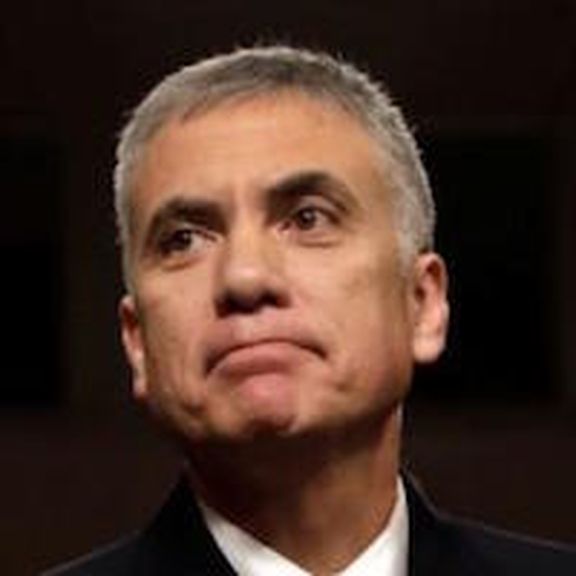Should a cyber war break out, the feds now have a central headquarters to combat threats and attacks. Last week, National Security Agency (NSA) and U.S. Cyber Command officials symbolically opened the doors to the new, $500 million Integrated Cyber Center (ICC) located inside Fort Meade in Maryland.
The facility is the first of six buildings under construction at Fort Meade over a 10-year period of time and will concentrate solely on coordinating and rebuffing cyber threats and disrupting adversarial networks (via Homeland Preparedness News). The ICC will become fully operational in August. At the least, it will be interesting to see if an organizational change can help the intelligence community and armed forces agree over the use of hacking weapons.
The event also included the naming of U.S. Army Gen. Paul Nakasone (pictured) as both commander of Cyber Command and NSA director in a change-of-command ceremony. Cyber Command last week was elevated to the country’s 10th combatant command, which means its forces can be deployed across the globe.
“Today we are at the dawn of a new era, facing the reality of wars changing character,” said Patrick Shanahan, Deputy Secretary of Defense, Cyberscoop reported. “The emergence of cyberspace and outer space has contested war fighting domains … cyberspace is not bound by geography, it is not bound to the physical presence of our adversaries. The next ten years will look significantly different from the last ten more than any of us can likely imagine.”
Who's In Charge?

Nakasone, who was confirmed as NSA director last month and assumes command from retiring U.S. Navy Adm. Mike Rogers, now heads the world’s foremost spy agency and the most powerful military hacking operation. Those two roles were combined in 2010. He will oversee the training of so-called cyber warriors, advocating for more cybersecurity resources, and planning and conducting cyber operations, according to a U.S. Department of Defense statement.
With the strong likelihood that state sponsored cyber forays -- such as those already propagated by Russia, China, North Korea and Iran -- can only grow in number and intensity, the facility provides a physical infrastructure to the country’s cyber defenses and offenses. The federal government, specifically President Trump, has been roundly criticized for not acting forcefully enough to craft a unified, national security strategy.
The facility will also provide a venue for other federal agencies and foreign collaborators to work with the NSA to conduct eavesdropping operations.
“Given the nature of this domain and the importance of defending national interests in cyberspace, the ICC/JOC will have significant representation from across the DoD and interagency,” said Cyber Command spokesperson Masao Doi, as CyberScoop reported. “Our foreign partners will also be represented in the ICC/JOC as well as linked virtually.”
Next Potential Moves
Toward the end of the year, the Trump administration will consider whether or not to detach Cyber Command from the NSA, the report said. If the two outfits are split, Nakasone’s command of both could change.
Last month, Trump sent to Congress a classified cybersecurity report detailing U.S. policy for defending the country against foreign nation state hackers. Earlier this year, he asked Congress for $3.4 billion to fund a Department of Homeland Security division tasked with battling cyber threats to federal networks and critical infrastructure.




